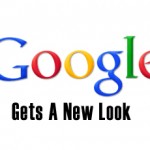 San Francisco — The Redmond, Wash., software giant Microsoft, taking aim at one of Google’s most popular services, Google Maps, continues to fine-tune its fledgling Bing search engine — on Wednesday enhanced its own online mapping service with several new capabilities, including a street-level view that takes users inside public buildings, like the Metropolitan Museum of Art, designed to provide a better search experience and hopefully lure people away from Google, which dominates the search market.
San Francisco — The Redmond, Wash., software giant Microsoft, taking aim at one of Google’s most popular services, Google Maps, continues to fine-tune its fledgling Bing search engine — on Wednesday enhanced its own online mapping service with several new capabilities, including a street-level view that takes users inside public buildings, like the Metropolitan Museum of Art, designed to provide a better search experience and hopefully lure people away from Google, which dominates the search market.
The revived Bing Maps released in beta, employs Microsoft’s Silverlight multimedia technology to provide a smoother way to zoom in and out of cityscapes that appear as 3D-like images and also boasts a gallery for applications, such as live traffic data feeds or input from travel webcams or Twitter Maps, according to Microsoft. The beta service also includes Microsoft’s answer to Google Street View, which it calls Streetside.
For starters, Bing’s new Streetside element borrows a page from Google Maps by providing street-level views of specific locations. One of the first is a Twitter application that uses the geolocation data recently included into Twitter, so that tweets can be viewed over a map in the locations they were sent from. That might assist people get real-time updates on a local news event, for instance.
As with Google Street View, you can move in several directions to get a better sense of the local scene:

Another application called Local Lens, takes advantage of listings from local blogs using hints from what is written in the posts, and attempts to place them over the map in the appropriate location as well.
Microsoft’s new version of Bing Maps also gives users a street view of many U.S. locations. Most online mapping services already feature bird’s-eye aerial photos. Bing Maps users can seize from “bird’s eye” views all the way into buildings, according to Microsoft technical evangelist Chris Pendleton.
“With bird’s eye, high resolution aerials, high fidelity, exact road information plus the new addition of streetside photography and enhanced bird’s eye all available in Bing Maps as map-based content, I think the game is afoot yet again!” Pendleton said in a blog post.
The overhaul is the result of years of work by Microsoft researchers, according to Bing director Stefan Weitz.
He further added that the emphasis was to measure real world usefulness of the online maps by asking users “Did you accomplish what you were trying to do?” instead of simply whether they found what they were seeking.
The renewed Bing Maps, in beta version, takes it down to the ground, featuring street-level photos of locations. Here is an example of a street-side view of Westlake Center in downtown Seattle.

Microsoft, which commands about 10 percent of the search market, is trying to gain share in a market dominated by Google.
To access the Streetside attributes in Bing Maps, click on the Blue Man icon at the bottom of the map screen. If the feature is available, you can drag the man to a location on the map, and the map will convert to a street view of the location.
Many urban places in the U.S. are available, but it has still to build out internationally. Streetside searchers for the Arc de Triomphe in Paris, the Forbidden City in Beijing and Placa de Catalunya in Barcelona turned up nothing. It also does not have Streetside photos for every neighborhood in Seattle. If users make Photosynths of specific locations and geocode them, they will show up in Bing Maps.
Do you aspire to have first page rankings in major search engines? Sure it is not difficult to rank number one among millions. Now you can just relax and smile and leave the task of achieving first position to your world-class search engine optimization company.


